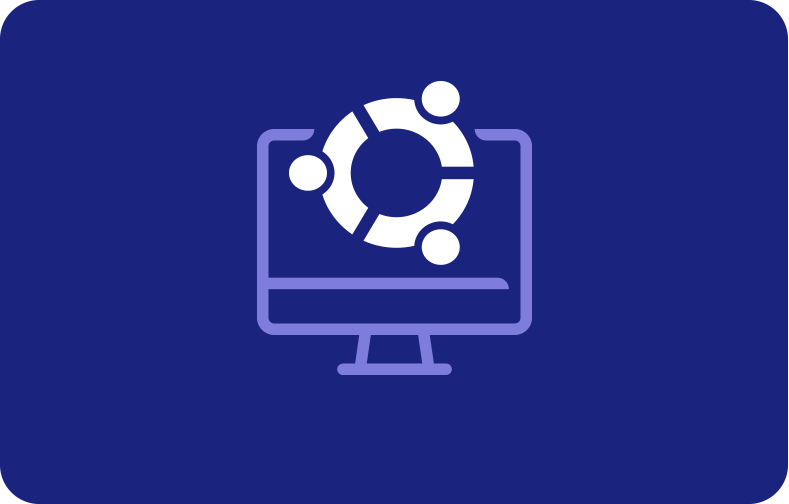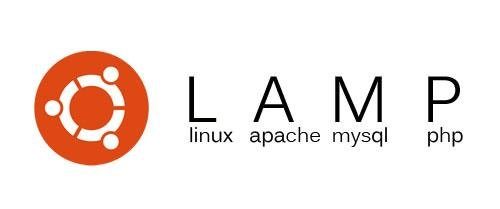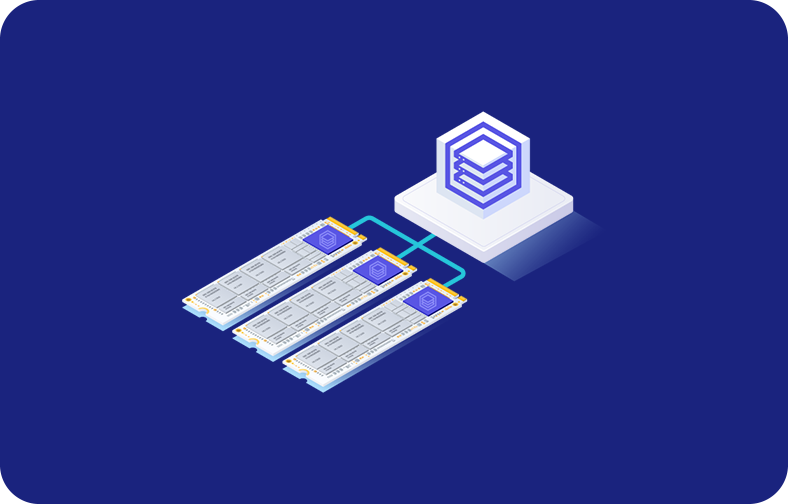The LAMP Stack: Your Essential Guide to Building Websites

Every website you visit on the enormous expanse of the internet is supported by a network of interconnected software. The LAMP Stack is one of the most famous and efficient web development foundations.
Unlike static websites that only display information, this potent mix enables developers to both create dynamic web pages and interactive websites that can store and handle data. This article will explore the LAMP Stack, outlining each component and how it helps your favorite websites run, whether you're new to web development or just interested in how websites work.
What is a LAMP stack?
Four open-source software components come together to form the LAMP stack which is a powerful online development environment.
The LAMP stack is a stable combination of open-source technologies that enable dynamic web development: PHP/Perl/Python, Linux, Apache, MySQL. Apache is the front-line soldier, processing incoming requests and delivering web content, while Linux provides stability and flexibility.
MySQL acts as the database powerhouse, managing structured data with efficiency and scalability. Finally, PHP/Perl/Python breathes life into web applications, enabling dynamic content generation and seamless database interaction. These components together form a versatile platform that helps developers to create amazing web experiences.
Are you willing to use the LAMP stack for your next web project? VPSServer offers high-performance Virtual Private Servers specifically optimized for LAMP applications. Get started today and experience the power of a reliable LAMP stack foundation for your website!

Why is a LAMP stack important?
It's not a coincidence that the LAMP stack is very popular. For web development projects of any scale, it is the ideal option due to its impressive set of benefits. Here's the reason:
Cost
The fact that LAMP is open-source is one of its main benefits. Expense-prohibitive software licensing is unnecessary because all the essential parts are freely available, open-source software packages, and changeable. For startups, small companies, and independent developers on a tight budget, this makes LAMP perfect.
Efficiency
LAMP components are known for their efficient operation. Linux is a lightweight and stable operating system, while Apache excels at handling high traffic volumes. MySQL's optimized database structure ensures fast data retrieval and manipulation.
S scripting languages like PHP are designed for web development and execute code efficiently. This combination translates to smooth website performance and a positive user experience.
Maintenance
The open-source community plays a vital role in maintaining the LAMP software stack itself. With more than a decade and a vast pool of developers constantly contributing bug fixes, security patches, and new features, LAMP remains secure and up-to-date. Additionally, the large user base means you can easily find solutions to authentication capabilities and troubleshooting tips online.
Support
LAMP's popularity translates to extensive support. There's a wealth of documentation, tutorials, and forums dedicated to LAMP components. Finding help online or through developer communities is a breeze, ensuring you're never stuck with a problem for long.
Flexibility
LAMP isn't a rigid framework. While the core components work seamlessly together, there's room for customization. Developers can swap components if needed. For instance, you can use a different web server like Nginx or a different database management system like PostgreSQL depending on your application data specific requirements. This flexibility allows developers to tailor the LAMP stack to their unique project needs.
What is a LAMP stack used for?
The LAMP stack helps developers create various dynamic web sites and applications. Let's explore its capabilities:

Static webpages
LAMP truly shines when it comes to building dynamic websites. These websites can adjust their content based on user input or data stored in the database. Here are some examples:
Content Management Systems (CMS): Popular platforms like WordPress and Drupal are built on the LAMP. Without requiring in-depth coding knowledge, LAMP makes it simple for users to generate, update, and publish information.
E-commerce Platforms: To handle user accounts, shopping carts, and product information, online retailers mainly rely on database operating systems. A strong basis for creating scalable and secure e-commerce websites is offered by the LAMP stack.
Social Networking Sites: User profiles, connections, and dynamic feeds are all powered by database interactions. LAMP stacks relational databases are perfect for building interactive social media platforms.
Web Applications: Any application that has dynamic web pages that require user logins, personalized content, or data manipulation can be built using the LAMP stack. From online banking to project management tools, the possibilities are vast.
Dynamic webpages
While LAMP excels at building up dynamic pages for web sites content, it can also be used for static web pages for simpler websites. Static webpages display the same content for every visitor and don't require database interaction.
LAMP can be a good option for:
Simple Brochures or Landing Pages: If you need a website to showcase your business or product information, a static website built with LAMP can be a cost-effective solution.
Informational Websites: Websites for organizations or clubs can be built with LAMP to display web pages or provide static content like news updates or contact information.
Remember that static websites won't be able to offer features like user logins, dynamic content updates, or interactive elements.
What is the LAMP architecture?
The magic of the LAMP stack lies in how its components work together. Here's a closer look at the architecture and how each element interacts:

Linux
Open-source software stacks run on the LAMP stack, with Linux being the most widely used operating system. Linux operating system is free to use and alter and is famous for its security and dependability. It is also free to use and alter. It offers the essential functions needed to run the other parts of the software stack.
Apache
Consider your website or servers' traffic controller to be the Apache web server. The web server software is responsible for receiving requests from web browsers on users' behalf, interpreting them, and sending the relevant web pages or data. Apache is dependable, effective, and able to manage large amounts of traffic.
MySQL
Websites often need to store and manage data, like user accounts, other data-referenced product information, or blog posts. This is where the MySQL database comes in. One RDBMS that is available for free is MySQL. This allows websites to store, organize, and retrieve their data efficiently.
PHP
PHP is a free and open-source scripting language for servers. HTML pages having PHP code embedded within them run on the web server before being transmitted to the user browser. This allows for dynamic content generation and interaction based on user input or database information. However, LAMP stacks can also be built using Perl or Python, which offer similar functionalities to PHP scripts.
This architecture allows for the creation of dynamic, data-driven websites and other web servers and applications that can handle user input, authentication, and complex functionality.
How does a LAMP stack work?
Understanding how a LAMP stack works boils down to three key stages: receiving requests, processing requests, processing data, and returning responses.
Receives requests
The journey begins when a user enters a website address in their browser. This sends a request to the web server, which in our case is Apache. Apache acts as the entry point for process requests, interpreting the request and identifying the specific webpage or data the user is looking for.
Processes requests
For static webpages (HTML files, images, file code), Apache can simply locate the file on the server and deliver it directly to the user's browser. However, for dynamic webpages, Apache needs to collaborate with other LAMP components.
MySQL Interaction: If the requested webpage involves dynamic content, Apache sends a query to MySQL, the database management system. This query asks for specific data that is relevant to user requests such as retrieving user profile information or a list of products from an online store.
PHP Takes Center Stage: Once the Apache HTTP server receives all the data from MySQL, the database server hands it off to PHP. PHP code embedded within the webpage interacts with the retrieved data. It can perform various tasks like:
-
Personalizing content based on user information.
-
Generating dynamic page elements based on database queries.
-
Performing calculations or data manipulation.
Returns responses
Once PHP has processed the request, it generates the final HTML content that the user's browser can understand. This processed content is then sent back to Apache. Apache acts as the final relay point, delivering the complete webpage (including HTML, CSS, and JavaScript) to the user's browser for display.
A Collaborative Effort
This three-stage process showcases the beautiful collaboration within the LAMP stack. While Apache handles initial requests and final delivery, PHP serves as the dynamic engine, responsible for processing code, interacting with the database, and generating the final webpage content.
This teamwork ensures that users receive the information they request, whether it's static content or a dynamic webpage tailored to the user's identity and their specific needs.
What are LAMP alternatives?
While LAMP is a dominant force in web development, there are other powerful tech stacks that developers can leverage. Let's explore some alternatives:
Alternative scripting languages
The "P" in LAMP traditionally refers to PHP, but the LAMP stack can be adapted to use other scripting languages that offer similar functionalities. Here are two popular options:
Perl
Perl is one of the first languages for web development and is known for its adaptability and potent processing of text features. But compared to PHP or Python, its syntax can be difficult for newcomers to understand.
Python
Python is a fast-expanding language that is well-known for its huge libraries a ease of use. This makes it a fantastic option for both novice and seasoned developers to create high-performance online applications. Django and other frameworks offer a solid base to develop Python online applications.
Elevate Your Web Development with VPSServer Hosting from VPSServer!
The LAMP stack provides a strong foundation for creating dynamic and captivating websites. But to make your concept a reality, you'll require a dependable and safe hosting option.
This is where VPSServer comes in!
VPSServer provides high-performance VPS hosting specifically designed for LAMP stack applications. With their powerful servers, you'll experience:
Fast Speeds: Make sure that your website loads quickly and delivers a seamless user experience.
Reliability: Say goodbye to downtime and focus on growing your online presence.
Scalability Made Easy: Easily scale your resources as your website traffic grows.
Expert Support: A dedicated support team is always available to assist you with any technical hurdles.
Head over to VPSServer VPS Hosting today and explore their flexible VPS hosting plans. They even offer a free trial, so you can experience the difference a LAMP stack on a VPS can make for yourself!
Frequently Asked Questions
What are the benefits of using a LAMP stack?
The LAMP stack offers a winning combination of features that make it a favorite among developers. First, it's completely free and open-source which saves you licensing costs. LAMP components are known for their efficiency and stability which offer smooth website performance. A vast community provides ongoing maintenance and security updates. The modular nature of LAMP allows for flexibility and you can even swap out the scripting language (PHP) if needed.
Is LAMP the only option for web development?
No, LAMP is a famous option but various tech stacks that meet different project demands are available. These stacks are MEAN or MERN.
Can I use a LAMP stack to build an e-commerce website?
Of course! Because LAMP can handle databases, it's ideal for developing e-commerce platforms that need shopping carts, user accounts, and product information management.
Is a LAMP stack suitable for beginners?
LAMP is a good starting point for learning web development. While some technical knowledge is required, the vast online resources and open-source nature make it easier to learn compared to some other stacks.
What are some security considerations for using a LAMP stack?
Keeping the software components updated with the most recent security updates is essential because LAMP is an open-source project. It's also crucial to create user access controls and robust password policies.
Can the LAMP stack be considered a generic software stack model?
It is true that the LAMP stack is an example of a generic software stack paradigm. Its modular architecture, interchangeable component usage, and commitment to open standards enable it to be easily customized for a range of web development scenarios.












